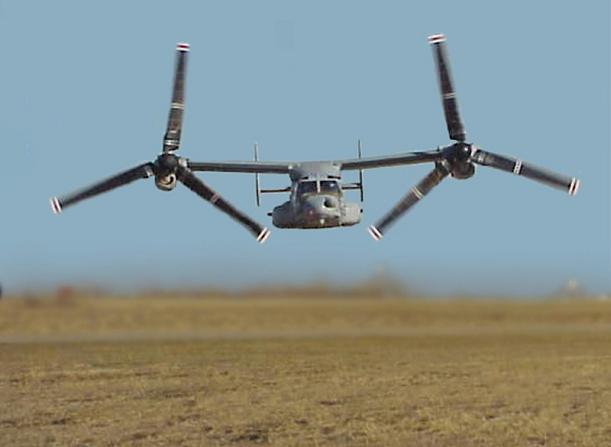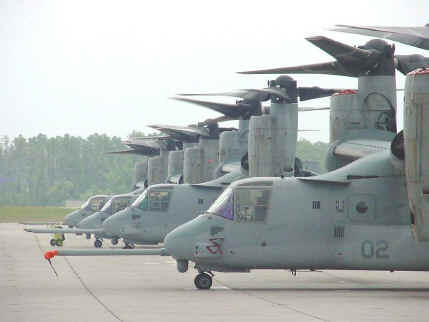|
BOEING BELL OSPREY V22
|
||
|
HOME | BIOLOGY | FILMS | GEOGRAPHY | HISTORY | INDEX | INVESTORS | MUSIC | SOLAR BOATS | SPORT |
||
|
April 27, 2007 - After more than 20 years of development – and seven years after two fatal crashes nearly killed the program entirely – the Boeing/Bell V-22 Osprey is finally prepping to actually do its job. This fall Marine Medium Tiltrotor Squadron 263 based at New River Marine Corps Air Station in North Carolina will deploy to Al Asad in western Iraq for seven months with around a dozen Ospreys, replacing 1960s-era Boeing H-46 Sea Knights for ferrying and re-supplying Marines fighting in that huge, desolate province.
The Boeing Bell V22 head on
The heart of Gaillard’s criticism is, of course, that the V-22 is a fundamentally flawed design and will crash at a high rate due to the “vortex ring state” phenomenon that was a factor in the crashes during testing. VRS is, essentially, a chopper’s tendency to stall during certain descent profiles. But the Marines have proved in thousands of flight hours since 2000 that VRS can be avoided with proper training and tactics, as we reported at Ares in January.
But Gaillard has backup criticisms:
A couple months back, following one of his anti-Osprey presentations, I asked Gaillard, these criticisms aside, if he wasn’t undervaluing the Osprey’s apparent strengths, including its high speed. He said that no speed advantage conferred by a tilt-rotor design was worth the cost and (he claims) crash risk.
Colonel Glenn Walters, one of the Marines’ most experienced Osprey pilots, begs to differ. He says that the V-22’s high speed -- up to 300 miles per hour versus around 100 miles per hour for the H-46 – makes it perfect for “distributed operations,” the Marine Corps’ emerging “network-centric” concept for covering more ground with fewer troops.
I
agree with Walters – and for good reason. In Maysan province in
southern Iraq right now, the British are exploring their own version of
distributed ops that has a small, light battlegroup roaming the desert
with minimal logistics support. The battlegroup absolutely relies on
daily resupply flights and short-notice medical evacuation flights by
Merlin helicopters based 100 miles away at Basra Air Station. The speedy
Merlins (around 200 miles per hour) can get to the battlegroup in just
30 minutes – and never miss a rendezvous owing to their high
reliability and superior navigation and communications systems. I should
know: I too relied on the Merlins when I visited the Maysan battlegroup
in October.
The Boeing Bell V22 head on
LINKS
AVIATION A - Z
A taste for adventure capitalists
Solar Cola - a healthier alternative
|
||
|
This
website
is Copyright © 1999 & 2013 NJK. The bird |
||
|
AUTOMOTIVE | BLUEBIRD | ELECTRIC CARS | ELECTRIC CYCLES | SOLAR CARS |

